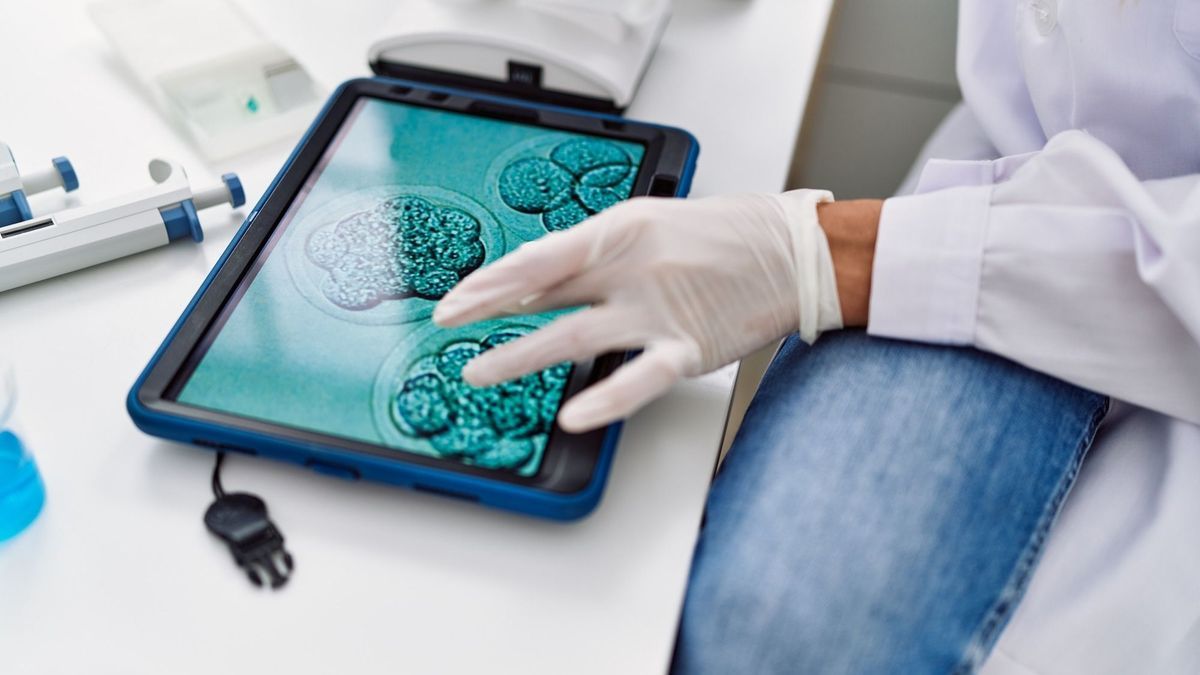
Chinese scientists have succeeded in developing kidneys containing human cells in pig embryos, a world first which raises ethical questions but which could offer new avenues in the face of the shortage of organ donations.
In this study, the results of which were published Thursday in the scientific journal Cell Stem Cellresearchers at the Guangzhou Institute of Biomedical and Health Sciences focused on kidneys because they are both among the first organs to develop and the most commonly transplanted in humans.
Hope in the face of the shortage of organ donations
If researchers in the United States have recently succeeded in transplanting genetically modified pig kidneys, or even a heart, into humans, scientists in China have opted for another approach by attempting to grow a pig embryo in a pig embryo. kidney as close as possible to that of a human.
“Rat organs had previously been grown into mice, mouse organs into rats, but past attempts to grow human organs into pigs had ended in failure“, underlines Liangxue Lai, one of the main authors of the study, in a press release.
“Our approach has improved the integration of human cells into recipient tissues and allows us to grow human organs in pigs“, he adds.
For Dusko Ilic, stem cell specialist at King’s College London, this study “describes the founding steps of a new approach to organ bioengineering using pigs as an incubator for the growth of human organs“.

This figure shows humanized kidney cells (red fluorescence) inside the embryo (row 2 and 3) compared to a “normal” pig embryo (row 1).
In addition to ethical issues, there are still many challenges so that this experiment can constitute a viable solution to deal with the shortage of organ donations, “but it’s nonetheless a fascinating strategy worth exploring“, adds this specialist who did not participate in this Chinese study.
Human cells found in pig brains
One of the main challenges in creating such hybrids is that pig cells must compete with human cells. To overcome this obstacle, the Canton Institute team used a new genome editing tool called CRISPR that allowed them to cut DNA at a specific location.
Specifically, they cut out two genes related to kidney growth in the pig embryo to create what they call a “niche.” Then they added pluripotent human stem cells, that is, capable of transforming into any type of cell.
In total, the researchers transplanted 1,820 embryos into 13 surrogate mothers and terminated their pregnancies between 25 and 28 days later to see if the experiment was successful or not.
But five of the embryos chosen for analysis had functioning kidneys for this stage of development and were beginning to develop a urethra that would eventually connect the kidneys to the bladder.
And they were composed of between 50% and 60% human cells, the researchers concluded.
“We discovered that by creating a niche in the pig embryo, this allows human cells to naturally take their place“, indicated Zhen Dai, co-author of the study, specifying that human cells had however been found in the spinal cord and brains of pigs.
Half-human, half-pig kidneys
Although no human cells have been found in the genitals of pigs, their presence outside the kidneys, and particularly in the brain, raises ethical questions about hybrid creatures, notes Darius Widera, professor of molecular biology at the University of Reading.
“Although this approach is a new milestone in research and a first successful attempt to grow organs containing human cells in pigs, the proportion of human cells in the kidneys generated still does not remain very high.“, he added.
Growing a fully functional humanized organ in a pig would require a few additional steps because organs are composed of multiple types of cells and tissues. In this study, the researchers created a niche for only a subset of cells, which meant that the kidneys contained porcine-derived vascular cells, which could cause organ rejection if used in a scenario of transplantation.
Beyond these reserves, the Canton Institute team is already working on growing other human organs in pigs, such as a pancreas or a heart.
Transgenic pigs versus humanized pig embryos
Concerning xenografts (animal transplants), another strategy has been put in place, the main one of which is to create genetically modified animals. Several transplants of transgenic pig organs have been carried out in the past with more or less obvious success rates. But the announcement in August from the team at NYU Langone Hospital in New York is unprecedented. The genetically modified pig kidney has been functioning properly for 32 days, the longest period for such an experiment in humans.
Previous genetically modified pig organ transplants have incorporated up to 10 genetic modifications, but this study shows that just one allows the kidney to function optimally for at least a month. This could make the process simpler (at least for kidney transplant). In this case, we are not dealing with a humanized kidney (with human cells) but a pig kidney with pig kidneys in which the genes causing a rejection reaction have been “turned off”.
